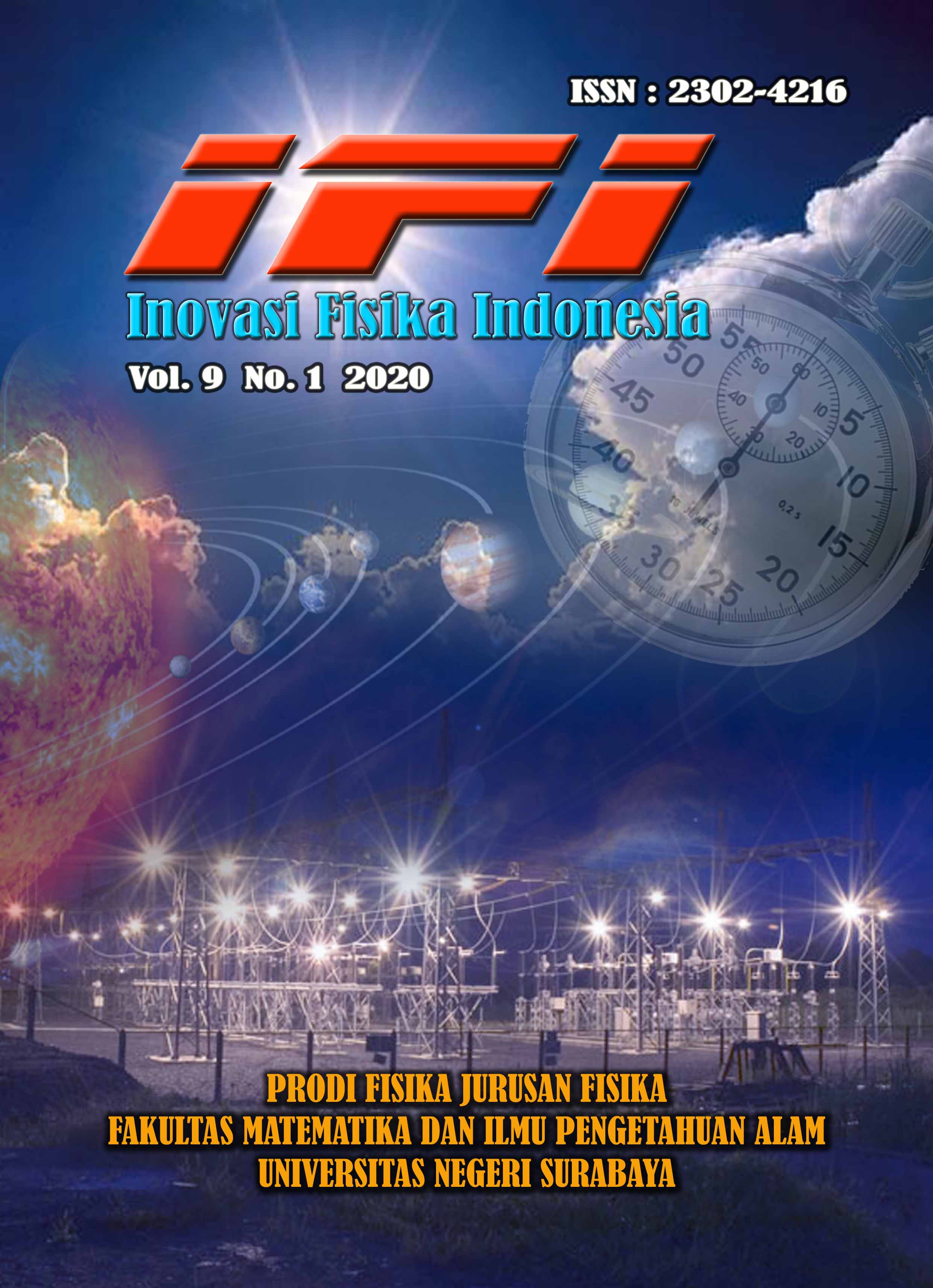NANOPARTIKEL FE3O4/SIO2 BERBASIS BAHAN ALAM SEBAGAI MATERIAL PENGADSORPSI PEWARNA DALAM AIR
DOI:
https://doi.org/10.26740/ifi.v9n1.p1-4Abstract
ABSTRAK
Methylene blue merupakan senyawa organik non-biodegradable yang dapat menyebabkan pencemaran lingkungan terutama pencemaran air. Methylene blue merupakan pewarna sintetis yang memiliki gugus benzene dan sulit untuk didegradasi. Sehingga upaya yang bisa dilakukan untuk menghilangkan methylene blue dalam air yaitu menggunakan metode adsorpsi. Metode ini dilakukan dengan mensintesis Fe3O4/SiO2 sebagai absorben dengan metode in-situ, dimana Fe3O4 memiliki sifat kemagnetan yang dapat menghilangkan katalis dan limbah zat warna, sementara SiO2 memiliki sifat kompabilitas yang baik sebagai bahan pelapis magnetik. Nanokomposit Fe3O4/SiO2 sebelum diaplikasikans sebagai adsorpsi dikarakterisasi dengan uji XRD dan FTIR. Dari hasil XRD dapat deketaui pola difraksi nanokomposit Fe3O4/SiO2 bersesuaian dengan pola difraksi Fe3O4, sedangkan FTIR menunjukkan keberdaan SiO2. Pada hasil penelitian menunjukkan bahwa variasi konsentrasi larutan berpengaruh terhadap nilai kapasitas adsorpsi. Semakin besar konsentrasi larutan methylene blue maka nilai kapasitas adsorpsinya semakin besar yaitu 2,41 mg/g sedangkan nilai efisiensinya menurun yaitu 84%.
Kata Kunci: Nanopartikel, Methylene blue, Kapasitas adsorpsi
ABSTRACT
Methylene blue is a non-biodegradable organic compound that can cause environmental pollution, especially water pollution. Methylene blue is a synthetic dye that has a benzene group and is difficult to degrade. So that efforts can be made to remove methylene blue in water using the adsorption method. This method is carried out by synthesizing Fe3O4/ SiO2 as absorbent by the in-situ method, where Fe3O4 has magnetic properties that can eliminate catalysts and dye waste, while SiO2 has good compatibility properties as a magnetic coating material. Fe3O4/SiO2 nanocomposites before being applied as adsorption were characterized by XRD and FTIR tests. From the XRD results, it can be determined that the Fe3O4/ SiO2 nanocomposite diffraction pattern corresponds to the Fe3O4 diffraction pattern, while the FTIR shows the presence of SiO2. The results showed that variations in the concentration of the solution affect the value of the adsorption capacity. The greater the concentration of the methylene blue solution, the greater the adsorption capacity value is 2.41 mg / g while the efficiency value decreases by 84%.
Keywords: Nanoparticle, Methylene blue, Adsorption capacity
Downloads
Downloads
Published
How to Cite
Issue
Section
 Abstract views: 505
,
Abstract views: 505
, PDF Downloads: 851
PDF Downloads: 851








1.png)
